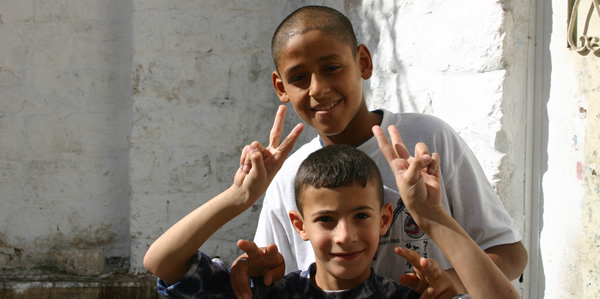
Occasionally you may get a question from a member of the public which you do not know the answer to.
No one should expect you to know every date and nuance, but should you need help in such a scenario, below we have outlined a relatively short introduction to the history of Palestine from early twentieth century to the present day, and some of the major issues surrounding the Palestinian struggle for freedom, justice and equality. This should help you to answer any questions or inquiries.
It is also worth noting that you may get ‘questions’ from what can only be described as ‘trolls’ – while we recommend engaging with people who have genuine inquiries, we suggest you ignore trolls; they simply want to waste your time.
Note: If you are finding all the text in this explainer a bit too much, you can find some useful short videos that help to explain certain issues on this page.
An Overview of the Main Issues
The Balfour Declaration (1917)
The First Intifada years (1987-1993)
The Oslo ‘Peace Process’ years (1993-2000)
The Second Intifada years (2000-2008)
The Strangulation of the West Bank
Palestinian Citizens of Israel
Palestinian Political and Child Prisoners
What is Apartheid and why do people call Israel an Apartheid State?
The Balfour Declaration (1917)
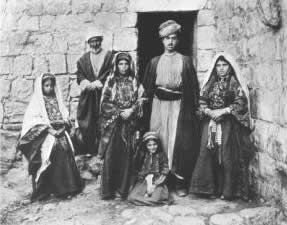
In November 1917 Britain issued the ‘Balfour Declaration’, in which it promised to use its colonial power to grant the predominately Arab region of the Levant called Palestine to the Zionist Movement – a movement of Jewish nationalist colonial settlers from Europe. Approximately 7% of the population of Palestine at this time was Jewish – many of them European immigrants – while the rest were indigenous Muslims and Christians. Britain promised a land that was not theirs to a colonial movement that sought to build an ethno-nationalist state at the expense of the indigenous Arab Palestinians, laying the foundation for what would become the ethnic cleansing of Palestine and the creation of the Apartheid State of Israel. Zionism was very much an extremist minority position in the wider Jewish world at this time. <back to top>
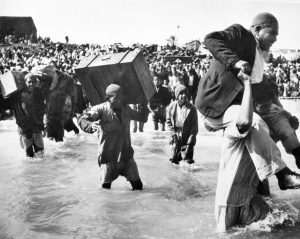
Following the Second World War, the Nazi Holocaust, and the resulting immigration of many thousands of European Jewish refugees into Palestine, the Zionist movement experienced a huge growth in support and confidence. Building on their attacks on British forces stationed in Palestine during and after the war, and following the UN’s undemocratic vote to partition historic Palestine against the wishes of the indigenous people, from 1947 Zionist paramilitary groups began the process of a calculated ethnic cleansing of Arab Palestinians.
By the time the British colonial mandate expired and its forces pulled out on 14th May 1948, some 300,000 Palestinians had already been expelled from their homes. Following the creation of the Apartheid State of Israel and the easy defeat by Zionist forces of an intervention by an outnumbered, outgunned and disunited Arab coalition, the process of ethnic cleansing continued. By early 1949 at least 750,000 people – two thirds of the indigenous population – had been expelled from their homeland, while thousands had been killed, and thousands more would be killed while attempting to return to their land. Some 500 Palestinian towns and villages were forcibly depopulated and destroyed or left to decay. Those who managed to survive this violence and remain in their homeland lived under strict Israeli military rule – curfews, restriction on movement, martial law, etc – until 1966. Palestinians refer to this period as Al Nakba, Arabic for ‘The Catastrophe’.
By 1950, 78% of historic Palestine was part of the Apartheid State of Israel, with Egypt in control of Gaza, and Jordan in control of the West Bank and East Jerusalem. Every year Palestinians around the world mark 15th May as ‘Nakba Day’. <back to top>

In June 1967, using bogus claims about impending attacks from neighbouring states, Israel launched a colonial war of conquest against Jordan, Egypt and Syria. Beginning with a surprise attack, within just six days the Israeli military had defeated these three Arab armies and occupied the rest of Palestine (Gaza, the West Bank and East Jerusalem), the Egyptian Sinai, and the Syrian Golan Heights. The Palestinians in these territories then fell under Israeli rule, and have been subjected to a brutal military occupation and apartheid regime ever since. A further 300,000 Palestinians were expelled into the refugee diaspora. Palestinians refer to this period as Al Naksa, Arabic for ‘The Setback’, and it is marked annually on 5th June.
Eventually, in 1982, the Sinai was given back to Egypt as part of a peace deal which saw the Egyptian leadership effectively abandon the Palestinians. <back to top>

Almost immediately after the end of the 1967 conquest, Israel began the process of colonising the land, building Jewish-only settlements in the occupied territories. All such settlements – whether in occupied Palestine or occupied Syria – are illegal under international law, and are considered war crimes under the Geneva Conventions. This is the position of the UN Security Council, the UN General Assembly, the European Union, the governments of Ireland and Britain, the International Court of Justice and all respected human rights organisations. Article 49 of the Fourth Geneva Convention states that it is illegal for an occupying power to “deport or transfer parts of its own civilian population into the territory it occupies”; all such settlements are thus war crimes. UN Security Council Resolutions 446 and 2334 declares settlements have “no legal validity” and are “flagrant violations of international law”.

Today there are more than 200 such illegal settlements in occupied Palestine, with a population of between 600,000 and 800,000. Illegal settlers have also taken over Palestinian farmland, water aquifers, and built illegal and highly pollutive industrial zones near Palestinian towns and villages.
Settlements are one of the most important factors in shaping life for West Bank Palestinians. Their destructive impact on the human rights of Palestinians extends far beyond the thousands of hectares that Israel has stolen to build them.

Land has been expropriated to pave hundreds of kilometers of apartheid settler-only roads; roadblocks, diversions and checkpoints that deny freedom of movement to Palestinians are erected based on the location of settlements; Palestinians have been denied access to much of their farmland; and the Apartheid Wall (begun in 2003, and deemed illegal by the International Court of Justice in 2004) was built in order to leave as many settlements as possible – and lots more Palestinian land – on its western side. Although in theory settlements take up only around 2% of the West Bank, it is estimated that up to 40% of Palestinian land in this area is totally off limits to Palestinians as a result of various factors owing to the presence of the illegal settlements. <back to top>
The First Intifada years (1987-1993)
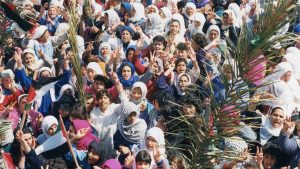
In December 1987, after two decades of brutal occupation, oppression and injustice, coupled with the complete failure of the international community to stand up for Palestinian rights and end Israeli apartheid, a spontaneous, widespread and largely unarmed national protest movement began. Palestinians called it the Intifada, which in Arabic literally means ‘shaking off [of oppression]’, but is more accurately translated as ‘uprising’. For six years Palestinians in the occupied territories organised themselves and conducted a hugely effective campaign of civil disobedience; strikes, demonstrations, boycotts, refusal to comply with occupation forces, ‘illegal educational activities’ as Israel closed educational facilities; the flying of ‘illegal’ Palestinian flags and writing of revolutionary graffiti; and confrontations between stone-throwing youths and the heavily armed occupation forces.

Apartheid Israel responded with extreme violence and repression, a policy of “might, power and beatings” imposed by an “iron fist”, in the words of then Prime Minister Yitzhak Rabin. This entailed the killing and maiming of thousands of protesters, and jailing and torture of political prisoners; horrific images were beamed around the world of soldiers breaking the bones of young Palestinians. In all, around 1,300 Palestinians were killed by occupation forces, roughly 250 of them children. According to Save the Children, almost 30,000 children “required medical treatment for injuries caused by beatings from Israeli occupation forces during the first two years of the Intifada alone”, one third of them under 11 years of age. A further 8,000 children were wounded by live fire during the same period.
Meanwhile, over 175,000 Palestinians were jailed during the Intifada, and in 1990 alone just one Israeli prison held approximately one out of every 50 Palestinian males over the age of 16. During this period Israel had the highest per capita prison population in the world, and the Israeli human rights group B’Tselem estimates that around 85% of prisoners were subjected to torture. <back to top>
The Oslo ‘Peace Process’ years (1993-2000)
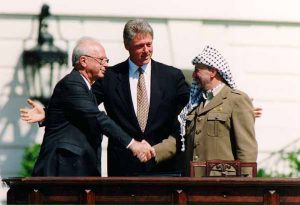
Under international pressure, and Israel’s desire to stave off a ‘South Africa’ moment, the Palestinian Liberation Organisation (PLO) and Israeli officials began secret negotiations in Norway that, in 1993, produced the first of the ‘Oslo Accords’. Several more accords and agreements would emerge over the next couple of years. The signing of these accords effectively saw the end of the First Intifada. Although hailed as the ushering in of an era of peace, these agreements in fact failed to adequately address the demands of the Palestinian people who had sacrificed so much for their freedom, not least during the Intifada.
The big issues – real self-determination for the Palestinian people, sovereignty over East Jerusalem, the dismantling of settlements, the final borders of any Palestinian state, and the return of the refugees – did not form part of the agreements; these were instead set to be part of the ‘final status’ negotiations due to take place years down the line. Reparations for decades of colonial brutality inflicted upon the Palestinians were not even raised.
Oslo – The Reality
Instead, the accords saw the PLO renounce armed resistance and recognise Israeli sovereignty over 78% of historic Palestine (i.e., the area that became the Apartheid State of Israel violently established between 1947 and 1949), while Israel recognised the PLO as the representative organisation of the Palestinian people, and agreed to release Palestinian political prisoners. Rather than taking a rights-based approach to national liberation, there was an implied – but far from explicit – commitment to Palestinian statehood in 22% of historic Palestine (in the West Bank, East Jerusalem and Gaza), which began with the creation of the Palestinian Authority (PA) which exercises limited control over some 18% of the occupied Palestinian territories (Area A), and mere municipal administration of another 21% (Area B). The remaining 61% (Area C) remained under full Israel civil and military control – though these designations are practically meaningless as Israeli occupation forces can and do operate wherever they like without regard to who has ostensible control. There were also ‘security’ cooperation agreements under which the PA agreed to police and suppress Palestinian resistance in the areas under its nominal control, and the nascent ‘independent’ Palestinian economy was effectively subsumed into the Israeli one.
During the ‘Olso Period’ (1993-2000), the number of Israeli settlers and settlements dramatically increased, and through outsourcing security and the building of a complex network of checkpoints, roadblocks and settler-only roads that cantonised and cut off Palestinian population centres from each other, restriction of freedom of movement based on an ID-card system, Israel’s occupation was in fact deliberately entrenched. There was never any intention to grant Palestinians their right to self-determination or freedom.
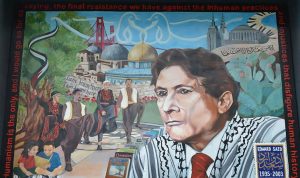
At the time, far-sighted Palestinian intellectual Edward Said wrote that far from being something to celebrate, Oslo was “an instrument of Palestinian surrender, a Palestinian Versailles” which saw “a century of sacrifice, dispossession and heroic struggle finally come to nought” with the PLO’s abandonment of the inalienable rights of the Palestinian people. Israeli historian Avi Shlaim, who at first welcomed the Accords, wrote on their 20th anniversary that Olso “was worse than a charade: it provided Israel with just the cover it was looking for to continue to pursue with impunity its illegal and aggressive colonial project”.
In short, Oslo failed to deliver any real gains for the Palestinian people – some called it the ‘greatest defeat since the Nakba’ – and rather than usher in a ‘peace process’, it began what many call a ‘pacification process’ whereby the official Palestinian political leadership attempted to cede the rights of the Palestinian people in exchange for localised power and privilege. This strategy was to backfire spectacularly. <back to top>
The Second Intifada years (2000-2008)
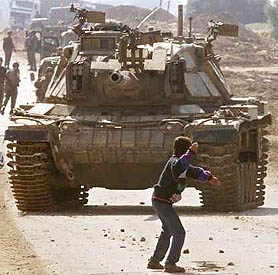
In September 2000, Palestinians once again spontaneously rose up against the occupation. Understanding that almost a decade of the Oslo process had left them in a worse position than before the First Intifada, a second widespread revolt began following the deliberately provocative visit of far-right Israeli politician and war criminal Ariel Sharon to the Al Aqsa Mosque compound. Becoming known as the Second Intifada, it elicited a much bloodier Israeli response than the first.
During the first weeks of the uprising, Israeli forces shot one million live rounds at unarmed protesters. This use of force expanded to include tanks, helicopter gunships and even F-16 fighter planes, and civilian neighbourhoods and PA institutions were subjected to shelling and aerial bombardment. This was a conscious escalation in the use of force designed to avoid a protracted civil uprising, like the First Intifada – and it was successful. In response, Palestinian frustrations saw a militarisation of aspects of the uprising, which resulted in an escalation of armed attacks and suicide bombings, which had been a tactic of anti-Oslo militant groups in the 1990s. As former Israeli diplomat Shlomo Ben Ami stated, “Israel’s disproportionate response to what had started as a popular uprising with young, unarmed men confronting Israeli soldiers armed with lethal weapons fueled the Intifada beyond control and turned it into an all-out war.”
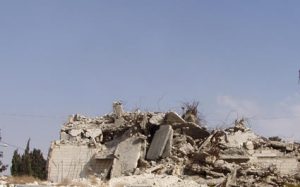
During this bloody period, almost 5,000 Palestinians, including almost 1,000 children, were killed by Israeli occupation forces or settlers. Just over 1,000 Israelis were killed by Palestinian armed groups, including 120 children. Thousands of Palestinians were wounded and thousands more imprisoned, and more than 3,000 Palestinian homes were illegally destroyed as ‘punitive’ measures, leaving thousands of people homeless.
By 2005 the militarised aspects of the Second Intifada had largely petered out, but the grassroots popular resistance which has always been the backbone of Palestinian struggle continued, as it does to the present day. <back to top>
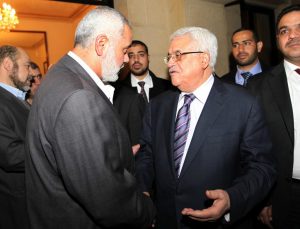
In 2006 an election for the Palestinian Authority was held in the occupied Palestinian territories. The winners were Hamas, the Islamic Resistance Movement, beating the Fatah party that had held power for the previous decade. Rather than accept the result of these elections (deemed “free and fair” by US and international observers), the international community and Israel sought to isolate and boycott the new government. Internationally, diplomatic ties and financial aid were immediately cut off while Israel, with Egyptian assistance and EU complicity, began its illegal blockade of the Gaza Strip, where Hamas has its main powerbase, and withheld taxes it had collected on behalf of the PA.
To counter this, a Palestinian national unity government was formed – yet this too was unacceptable to the US and Israel. Seeking to overthrow the democratically elected government, the US connived with elements of Fatah to stage a military coup that would oust Hamas. However, details of this so-called ‘Plan B’ leaked, and Hamas instigated a counter coup. The ‘Battle of Gaza’ saw 160 people, mostly partisans for each side, killed and left Hamas in control of Gaza and Fatah in control of the West Bank. These bitter divisions and their enduring wounds were and remain a tragedy for the Palestinian people, severely compromising the unity that is needed to end Israel’s occupation and apartheid. <back to top>
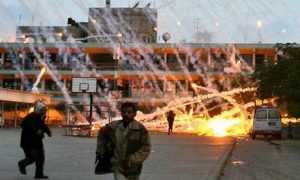
After this mini-civil war, Israel tightened its siege of Gaza, the tiny coastal enclave which is home to two million people, the vast majority of them refugee families from 1948, more than half of them minors. This blockade is a form of illegal collective punishment with the aim of undermining the Hamas administration. That this is the goal of the siege has been repeatedly and openly admitted by Israeli officials. This cruel siege has endured and been an aspect of daily Gazan life ever since. With a regime of punishing economic sanctions, a dearth of medical supplies, artificially-imposed food, water and electricity shortages, arbitrary exclusion zones for – and attacks on – farmers and fishers, an unemployment rate of over 50% (the highest in the world), and frequent military incursions, Gaza remains constantly on the brink of a huge man-made humanitarian catastrophe.
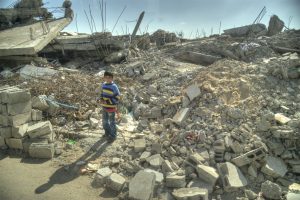
Add to this the five large scale assaults on Gaza by the Israel occupation forces since 2006, which cumulatively have left over 4,000 people dead (including some than 1000 children), tens of thousands more wounded, maimed or traumatised, innumerable homes and facilities destroyed, and the civilian infrastructure of Gaza in ruins, and we are left with an incredibly bleak picture.
In 2015 the UN issued a report that stated that Gaza would become “unliveable by 2020”. Two years later, another UN report was issued that reported that “the ‘unliveability’ threshold has already been passed”. At the time of writing Gaza remains under this brutal and illegal siege, teetering on the precipice of catastrophe, awaiting the next Israeli onslaught while the international community continues to sit on its hands. <back to top>
The Strangulation of the West Bank
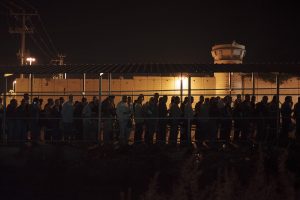
Meanwhile, things are little better in the West Bank where three million Palestinians live. Here, despite the nominal Palestinian Authority control in ‘Area A’, Israeli occupation forces continue to control almost every aspect of Palestinian lives, from the moment they wake to go to work until they retire to bed.
The Apartheid Wall – sometimes called the Separation Barrier – which snakes through the region, the settler-only roads that criss-cross it, and the illegal settlements the wall is there to entrench, combine to choke the life out of the West Bank.

The associated checkpoint regime – there are over 500 checkpoints and roadblocks – impedes, and often denies, freedom of movement and cuts Palestinian population centres off from each other, with people having to queue from very early morning in order to ensure they get to work, school, university or medical appointments on time. 90% of Palestinians are cut off from their economic and social capital of Jerusalem and can only enter with special permits that are extremely difficult to obtain.
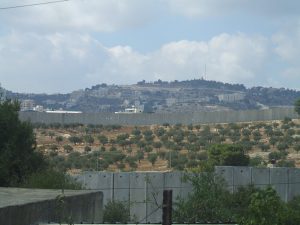
Much arable land is either off limits to Palestinian farmers, or has simply been stolen by settlers. What land that is accessible is often the subject of violent attacks by settlers (protected by the occupation forces) with the uprooting of olive trees or the burning of crops. Israel controls all borders and entry points and arbitrarily denies the entry and exit of both people and goods. The unemployment rate is 18%; many of those who are employed work in construction inside Israel, and, in a bitter irony, often in building illegal settlements. Enforced poverty is compelling these workers to build the very settlements that are contributing so much to the collective misery of the Palestinian people.

Killings of Palestinian civilians are frequent. Military raids on villages to drag people, mostly young men and boys, from their beds in the middle of the night are a nightly occurrence; thousands of political prisoners, including hundreds of children, are incarcerated as a result. <back to top>
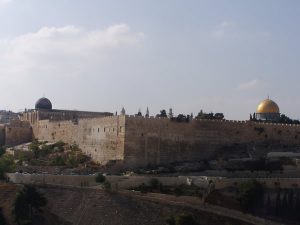
Palestinian East Jerusalem was part of the territory captured in 1967 by Israel, which immediately began moving illegal settlers into the eastern part of the city in violation of the Geneva Conventions. Ever since, Israel has attempted to reduce the city’s population of Palestinians and expand the illegal Jewish-Israeli settler population. The steps taken to achieve this goal include the isolation of East Jerusalem from the West Bank, land theft, and discriminatory policies in planning, construction and budgeting. Although the annexation of East Jerusalem and its residents was a decision made solely by Israel, Israeli authorities treat East Jerusalem Palestinians as if they had made a voluntary decision to immigrate to Israel.
In 1980, Israel formally annexed East Jerusalem, in a move declared by the UN Security Council to be “a violation of international law” which is “null and void and must be rescinded”. Palestinians in East Jerusalem face severe discrimination under Israel’s apartheid regime, and are considered merely ‘residents’ in law – is essence Israel treats them as immigrants rather than indigenous people living under belligerent occupation. Therefore, Israel can void Palestinians’ residency status and social benefits and expel them if they do not meet restrictive criteria the occupation demands; some 16,000 have had their residency revoked, and over 5,000 Palestinian homes have been demolished.
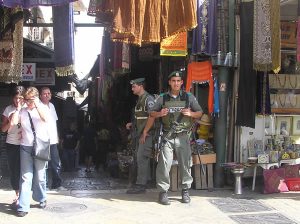
Almost 40% of Palestinian land in East Jerusalem has been confiscated and given to the 215,000 illegal Israeli settlers there, while the city’s 320,000 Palestinians can build in only 7% of the city. Over 70% of Palestinians in the city live below the poverty line, 40% are not connected to the water grid, and only 10% of the municipal budget is allocated for Palestinian areas, despite Palestinians constituting 40% of the overall population of the city, and 60% of the eastern part.
According to Israeli professor Oren Yiftachel, all these policies are part of a plan to ‘de-Arabize’ Palestinian East Jerusalem.

Notwithstanding the US Trump regime’s decision to recognise Jerusalem, including East Jerusalem, as the capital of Apartheid Israel, this designation has no validity under international law, nor does the US decision to recognise the occupied and illegally annexed Syrian Golan Heights as part of Israel. <back to top>
Palestinian Citizens of Israel
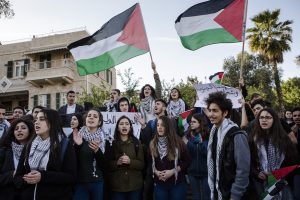
Often referred to as ‘Israeli Arabs’, though the vast majority do not identify in this way, these are the Palestinians who managed to survive death or expulsion during the Nakba, who became involuntary citizens of the Apartheid State of Israel, and their descendants. Today they number just under 2 million, and make up 20% of the population of the state. According to the US State Department, they face severe “institutional, legal, and societal discrimination”.
For the first eighteen years of Israel’s existence they lived under a system of martial law, similar to that which exists today in the occupied Palestinian territories. In 1966 military rule was finally lifted, but although Israel propagandists claim that Palestinian citizens enjoy the same rights as Jewish-Israelis, they in fact face discrimination in many aspects of life, from land ownership to spousal rights.
Citizenship vs Nationality vs Rights

In Israel, unlike in virtually every other country, there is a distinction between ‘citizenship’ and ‘nationality’. While citizenship is conferred upon all regardless of ethnic origin, these citizens are defined by their ‘nationality’ – Jewish, Arab, Druze, etc. There is no such thing as an Israeli nationality (something that has been tested in court) and this has very real practical effects for non-Jewish citizens. Israel calls itself the ‘nation state of the Jewish people’, and unlike any Western country, it is emphatically not a state of all its citizens, but a state in which non-Jewish citizens are, at best, merely tolerated.
According to Israeli human rights organisation Adalah, there are 65 laws currently in place that discriminate against Palestinian citizens on the basis of their ethnicity, ranging from the ‘legalised’ theft of land, to the denial of residency and citizenship to OPT Palestinian spouses of Palestinians, to the criminalising of boycotts. The most fundamentally discriminatory law of all is Israel’s so-called ‘Law of Return’ whereby anyone with a Jewish grandparent can move to Israel and become a citizen. At the same time, Israel continues to deny Palestinian refugees their legally mandated Right of Return, meaning that someone whose family has never lived in the state can become a citizen, while people living a few hundred kilometres away who were forced from their land within living memory are barred from ever coming home because they are the ‘wrong’ ethnicity.

Palestinian citizens do not enjoy the same right to access to land as Jewish citizens. The Jewish National Fund (JNF) a racist organisation that controls 13% of the land, will not lease homes to non-Jews. The JNF also has an influential presence in the Israel Land Authority, which controls some 93% of the land in the state. In practice, according to Adalah, around 80% of all land in the state is off limits to Palestinian citizens. Since the creation of Israel, not a single new town for the Arab population has been built while countless Jewish towns have been.
Furthermore, some 400,000 Palestinian citizens are internally displaced people (IDPs) within the state, barred from returning to lands that were stolen when they were declared “present absentees” by the state following the Nakba. Many live in unrecognised villages – often within sight of their original homes which are now occupied by Jewish-Israelis – with no access to public services and the constant threat of home and/or village demolition hanging over them, especially Bedouin people in the Naqab (Negev) Desert.
Discrimination and demographics
Palestinian citizens face economic discrimination, with over 50% of Arab families living below the poverty line, compared with 14% of Jewish families; 66% of Arab children live in poverty. Unemployment rates are higher for Arabs than Jews, and Arabs tend to be employed in lower paid economic sectors; the average monthly wage for an Arab worker is €1,830 compared with €2643 for a Jewish worker, while Arab women on average earn only €1482 per month. Only 10% of civil service employees, and just 2.5% of all high-tech workers, are Arab.

Although constituting 20% of the population, political parties that specifically represent the interests of the Palestinian citizens make up only 10% of seats in the Knesset, the Israeli parliament. Only five Arabs have ever served in government (all members of non-Arab majority parties) and no Arab-majority party has ever been invited to form part of an Israeli government. Before almost every general election, legal attempts are made to ban Arab-majority parties and individual Arab politicians from running, and Israeli law prohibits parties that are explicitly anti-Zionist from running in elections. In the realm of justice, only three Arabs have ever served on Israel’s Supreme Court and none of them have been Muslim.
Palestinian citizen are openly referred to as a “demographic threat”; their very existence is seen as a threat to the Apartheid State of Israel, and both political and societal incitement against the Palestinian population is widespread, leading to a climate of fear. In essence, it boils down to this – the very fact that Palestinians procreate in their native land is a viewed as threat to Israel’s colonially enforced demographic balance.
Most recently, Israel passed the so-called ‘Jewish Nation State Law’ which codified much of what was already a de facto racist reality. In declaring that “Israel is the historic homeland of the Jewish people” who “have an exclusive right to national self-determination in it” and enshrining systematic discrimination into its basic laws, Israel has openly declared itself an apartheid state. <back to top>

The surviving Palestinian exiles of 1947-49 and 1967 and their descendants, at a conservative estimate, number around five million people, and make up the Palestinian refugee population. Most live in the surrounding countries of Lebanon, Jordan and Syria where they face uncertainty, precarity and oftentimes severe discrimination – both formal and informal. The remainder, some two million, live in refugee camps inside occupied Palestine. In addition there are around 300,000 internally displaced people (IDPs) inside the Apartheid state of Israel (16% of the Palestinian citizens of the state, and 4% of the entire Israeli population).
Article 49 of the Fourth Geneva Convention states that “forcible transfers, as well as deportations of protected persons from occupied territory to the territory of the Occupying Power or to that of any other country, occupied or not, are prohibited, regardless of their motive.” Under Article 147 of the 1949 Geneva Convention IV, “unlawful deportation or transfer … of a protected person” constitutes a grave breach of the Convention.
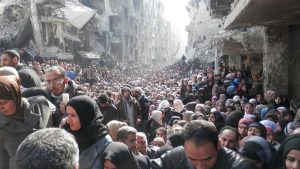
For seven decades Israel has refused Palestinian refugees their Right of Return; UN General Assembly Resolution 194 states that Palestinian “refugees wishing to return to their homes and live at peace with their neighbours should be permitted to do so at the earliest practicable date.” This resolution has been reaffirmed many times over by UNGA. Opponents of Palestinian rights claim 194 is irrelevant as UNGA resolutions are non-binding; however Israel’s accession to the UN was predicated upon its acceptance. Furthermore, the resolution is merely an acknowledgement of the specific applicability of the right of return to Palestinian refugees which, according to the Cambridge Journal of International & Comparative Law can be found in eight branches of international law: inter-State nationality law, law of State succession, human rights law, humanitarian law, law of State responsibility, refugee law, UN law, and natural/customary law.
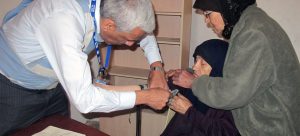
As part of the Trump-Netanyahu axis of racism, the US has cut all funding to the United Nations Relief and Works Agency for Palestine Refugees (UNRWA), the UN agency that provides medical care and education to millions of refugees. This is a part of the US-Israeli strategy to ‘de-refugeeify’ Palestinian refugees – however it has no legal validity and will not stop the refugees’ fight for their right to return and live in peace in their homeland. <back to top>
Palestinian Political and Child Prisoners
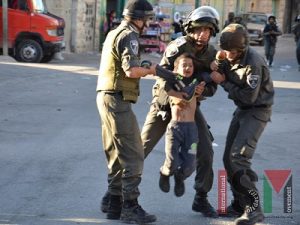
At any given time there are somewhere between 5,000 and 7,000 Palestinian political prisoners in Apartheid Israel’s prisons. Of these, between 200 and 300 will be children.
Since 1967, around 800,000 Palestinians have been detained by the Israeli military for political reasons. Israel’s use of torture and other violations of human rights and international law in regards to political prisoners are widespread and systematic. Each year Israeli occupation forces arrest and detain around 6,000 people, including an average of 700 children.
A 99.7% Conviction Rate
Israel tries Palestinians in apartheid non-jury military courts which are inherently unfair; these courts, where trials last an average of five minutes, have a 99.7% conviction rate. Amnesty International says these “proceedings do not meet international standards for fair trial”. Israel also uses a form of indefinite internment without trial called Administrative Detention “to suppress the legitimate and peaceful activities of activists in the Occupied Palestinian Territories”, according to Amnesty. In addition, torture and ill treatment (of both children and adults) along with other violations are routine according to the UN Committee Against Torture, UNICEF, and human rights groups like Amnesty and Defence for Children International. Palestinian political prisoners are frequently forced to resort to hunger strikes – individual and collective – in order to secure basic human rights within the apartheid prison system.
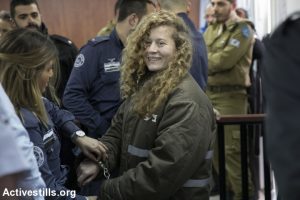
According to Defence for Children International Palestine, “from the moment of arrest, Palestinian children encounter ill-treatment and torture at the hands of Israeli forces. Three out of four experience physical violence during arrest or interrogation. Israel is the only country in the world to automatically prosecute children in military courts that lack basic safeguards for a fair trial.” Ill-treatment in the Israeli military detention system remains “widespread, systematic, and institutionalized throughout the process,” according to the UNICEF. Human Rights Watch says that “Palestinian children are treated in ways that would terrify and traumatize an adult. Screams, threats, and beatings are no way for the police to treat a child.”
The issue of prisoners, particularly child prisoners, is one that is often overlooked. Yet the prisoners issue goes to the very heart of Israeli policy in Palestine – the decapitation of political movements, the criminalisation and ‘securitisation’ of young people, not to mention the psychological and traumatic effects detention and abuse have on people, especially children, who endure the prison system. The imprisonment regime is an important aspect of Israel’s total domination of the lives of Palestinians. <back to top>
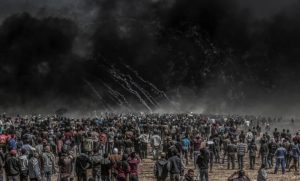
In both the West Bank and Gaza, the killing and maiming of Palestinians by both occupation forces and illegal settlers continue apace and with complete impunity. For example, in 2013 an Israeli human rights group noted that in the cases of the more than then 6,500 Palestinians killed since September 2000, Israel opened only 179 investigations, and not a single one resulted in a murder conviction.
At the time of writing , the ongoing ‘Great March of Return’ protests in Gaza have seen some 200 unarmed protesters, including women, children, medics and journalists, deliberately shot and killed, and thousands more wounded – and often permanently disabled – by live fire.

In total, since the outbreak of the First Intifada in 1987, Israeli occupation forces and illegal settlers have killed over 10,000 Palestinians, among them almost 2,500 children, and maimed or otherwise injured over 250,000, with 15,000 reported limb amputations. Owing to incomplete records it is difficult to come to a truly accurate figure for casualties before that, but a rough estimate would put the number of Palestinians killed by the Israeli military or its proxies in the 40 years between 1947 and 1987, both in Palestine and the surrounding countries, at around 20,000, with a great many more wounded.
Since 1967, around 800,000 Palestinians have been detained by the Israeli military for political reasons. In the same time frame, almost 50,000 Palestinian homes and other structures have been punitively demolished – and many more destroyed by airstrikes and shelling.
A Culture of Impunity Reigns
The Palestinian economy has been strangled by the Israeli occupation. The combined unemployment rate in the occupied Palestinian territories is 28%, the 9th highest in the world, and the World Bank currently places it 116th out of 190 economies. Furthermore, the World Bank estimates an annual loss of some US$285 million as a result of Israel’s anti-Palestinian policies – without even figuring in additional losses due to things like export restrictions and denial of access to arable land. Israel also continues to frequently withhold large amounts of tax revenues that it collects on behalf of the PA.
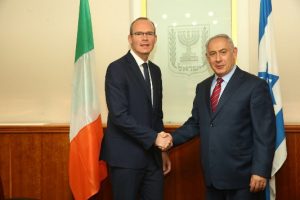
What these incredible figures show is that Palestinian lives and livelihoods are considered to be next to worthless under a culture of racism, incitement and impunity that runs rampant in the Apartheid state of Israel. It is clear that such a culture of impunity reigns because the Israeli state itself enjoys virtual immunity from censure and sanction by the international community. These figures are a stark reminder of why Palestinians have called for an international campaign of boycotts, divestment and sanctions (BDS) against Israel, aimed at forcing it to end its occupation and comply fully with its obligations under international law. <back to top>
What is Apartheid and why do people call Israel an Apartheid State?
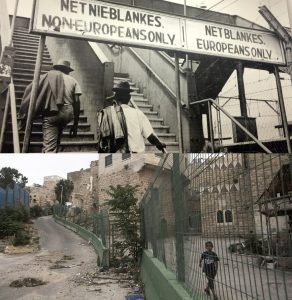
Apartheid is an Afrikaans word for ‘apartness’ or ‘separation’, which was originally used to describe the system of racial discrimination that existed in South Africa between 1948 and 1994. However, today the term Apartheid is used in international law to describe a category of regime, defined in the United Nations (UN) International Convention on the Suppression and Punishment of the Crime of Apartheid (1973), and refined in Article 7 of the Rome Statute of the International Criminal Court in 2002.
The Convention defines the Crime of Apartheid as: “inhumane acts…committed in the context of an institutionalised regime of systematic oppression and domination by one racial group over any other racial group or groups and committed with the intention of maintaining that regime.”
There is overwhelming evidence that the system instituted by the Israeli government against the Palestinian people meets the UN definition of Apartheid. Various human rights organisations such as Human Rights Watch, the Palestinian Human Rights Organizations Council, B’Tselem, Yesh Din, and even a UN Report have all issued reports stating that Israel is committing the Crime of Apartheid.
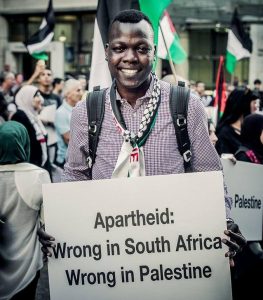
In practice, Israel and the occupied Palestinian territories constitute one territorial unit (which Palestinians often refer to as ‘Historic Palestine’ as it was all called Palestine until 1948) under full Israeli control. As of 2016, of the total population of the Apartheid State of Israel and the Occupied Palestinian Territory, around 6.45 million are Jewish Israelis and about 6.41 million are Palestinians. Of the nearly six and half million Palestinians, only under one third (2 million Palestinian citizens of the Israeli state) get to vote in Israeli elections to decide the type of government that rules over their lives.
Under Israeli law, and in practice, Jewish-Israelis and Palestinians are treated differently in almost every aspect of life including freedom of movement, family, housing, education, employment and other basic human rights. Dozens of Israeli laws and policies institutionalise this prevailing system of racial discrimination and domination.
When it comes to refugees and the wider Disapora, millions of Palestinians – whether Muslim, Christian or Atheist – who originate in historic Palestine are not allowed to return to their homes, while at the same time anyone with a single Jewish grandparent is eligible for Israeli citizenship and welcome to go to live there on land stolen from these same Palestinian exiles.
Segregation
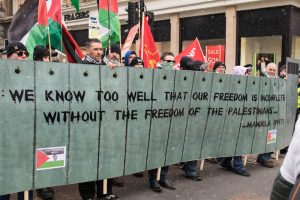
Segregation is carried out by implementing separate legal regimes for Israelis and Palestinians living in the same area. For example, Israelis living in the illegal Israeli settlements in the occupied West Bank are governed by Israeli civil law, while Palestinians also living in the occupied West Bank are governed by Israeli military law. Within the state of Israel, Palestinian citizens, who according to Israeli propaganda are afforded the same rights as Israeli Jews, are in fact subject to over 65 discriminatory laws, are not free to live wherever they choose, experience horrific incitement, and live in fear of forced transfer from their homes.
Israel carries out various acts targeting Palestinians – based solely on their ethnicity – that are prohibited by the UN Apartheid Convention including: forcible transfer to make way for illegal settlements; prevention from returning to their homes and lands; systematic and severe deprivation of fundamental human rights; denial of the right to freedom of movement and residence; murder, killing, torture, unlawful imprisonment and other severe deprivations of physical liberty; persecution because of opposition to Apartheid.
Apartheid: ‘Petty’ vs ‘Grand’

It is worth addressing a claim that frequently comes from Israel’s apologists. Israel cannot be an apartheid state they say, because there are ‘Arabs who are members of parliament, legal officials, police and soldiers, models and entertainers, and so on’ and there are, formally at any rate, no separate restaurants, hotels, swimming pool, toilets, public transport, etc. While there are indeed Palestinians holding such offices or societal positions, and – theoretically at least – there is no such ‘official’ physical segregation within the state (as opposed to within the territories it occupies), this by no means absolves Israel of the Crime of Apartheid.
Leaving aside that there were black and ‘Coloured’ soldiers and officers in the military and police forces of Apartheid South Africa, and towards the end of the apartheid era there were non-white lawyers, judges, politicians, and, yes, even a black South African Miss World contestant, these types of claims fundamentally – and likely deliberately – conflate so-called ‘petty apartheid’ with the overarching system of ‘grand apartheid’.

Petty Apartheid is what most people probably visualise when they think of this era. This is because it was the most immediately visible aspect of Apartheid and concerned the widespread segregation of facilities based on ethnicity – though even in South Africa these laws were being whittled away a decade before the fall of the racist regime as it sought to bolster its power via international legitimacy. Grand Apartheid, on the other hand, was where the real basis for racist discrimination lay – the legal denial of political, national, civil and human rights that ensured that whether or not two people with different skin colours could use the same bathroom or get on the same bus, they would remain fundamentally unequal because of the ethnicity they happened to be born into. This was the major injustice at the heart of all the other injustices in Apartheid South Africa – just as it is in Apartheid Israel.
While Israel does indeed display aspects of Petty Apartheid – settler-only roads throughout the West Bank, segregated walkways in Hebron, ‘admission committees’ in small towns, different coloured license plates and ID cards, and so on – it most certainly displays all the hallmarks of Grand Apartheid. We see denial of political representation to millions who live under its rule (some token Palestinian politicians in the parliament notwithstanding), economic discrimination, the denial of freedom of movement based on ethnicity, legalised inequality before the law (some token Palestinian judges notwithstanding) , the denial of the right for Palestinians to return to their homeland, and, of course, the crushing system of oppression and repression that ensures that this brutal racist system remains in place.
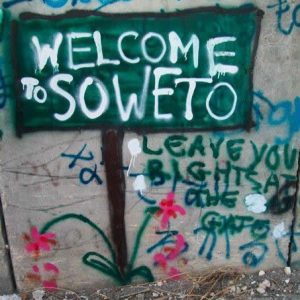
Israel ‘makes South African apartheid look like a picnic’
Indeed, there is an argument to be made that Israel’s variation of Apartheid is actually worse than the version practiced in South Africa. This is a view shared by South African veterans of the anti-Apartheid struggle such as former South African president Kgalema Motlanthe, speaker of the South African parliament Baleka Mbete, and former head of the Congress of South African Trade Unions (COSATU) Willie Madisha. Former South African minister Ronnie Kasrils has said that: “This is much worse than apartheid. The Israeli measures, the brutality, make apartheid look like a picnic. We never had jets attacking our townships. We never had sieges that lasted month after month. We never had tanks destroying houses.” South African Nobel Peace Prize winner Archbishop Desmond Tutu has said that Israeli apartheid is a more brutal form than its South African counterpart, noting that Palestinians are “being oppressed more than the apartheid ideologues could ever dream about in South Africa”.
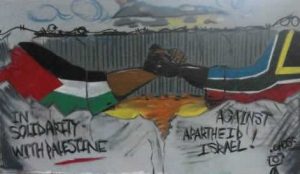
One final note; the Crime of Apartheid is a legal category in international law, and while comparisons between Apartheid-era South Africa and Apartheid Israel are certainly valid, the latter does not have to exactly mirror the former for it to be judged guilty of Apartheid. As noted South African legal expert and jurist Prof John Dugard has said, “Apartheid is alive and well and thriving in occupied Palestine.” <back to top>
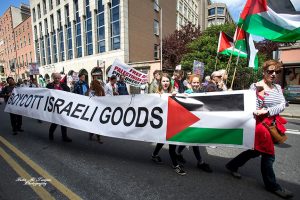
Inspired by the South African anti-apartheid movement, in 2005 over 170 Palestinian civil society organisations called for boycotts, divestment and sanctions (BDS) as a form of non-violent pressure on Israel. Today the BDS movement is supported by over 200 Palestinian unions, refugee networks, women’s organisations, professional associations, popular resistance committees and other Palestinian civil society bodies.
The Palestinian BDS call urges nonviolent pressure on Israel until it complies with international law by meeting three demands:
Ending its occupation and colonization of all Arab lands and dismantling the Wall: International law recognises the West Bank (including East Jerusalem), Gaza and the Syrian Golan Heights as occupied by Israel. As part of its military occupation, Israel steals land and forces Palestinians into ghettos, surrounded by checkpoints, settlements and watchtowers and an illegal apartheid Wall. Israel has imposed a medieval siege on Gaza , turning it into the largest open air prison in the world. Israel also regularly carries out large-scale assaults on Gaza that are widely condemned as constituting war crimes and crimes against humanity.

Recognizing the fundamental rights of the Arab-Palestinian citizens of Israel to full equality: One-fifth of Israel’s citizens are Palestinians who remained inside the armistice lines after 1948. They are subjected to a system of racial discrimination enshrined in more than 50 laws that impact every aspect of their lives. The Israeli government continues to forcibly displace Palestinian communities in Israel from their land. Israeli leaders routinely and openly incite racial violence against them.
Respecting, protecting and promoting the rights of Palestinian refugees to return to their homes and properties as stipulated in UN Resolution 194: Since its violent establishment in 1948 through the ethnic cleansing of more than half of the indigenous people of Palestine, Israel has set out to control as much land and uproot as many Palestinians as it can. As a result of this systematic forced displacement, there are now more than 7.25 million Palestinian refugees. They are denied their right to return to their homes simply because they are not Jewish.
An Anti-Racist Human Rights Movement
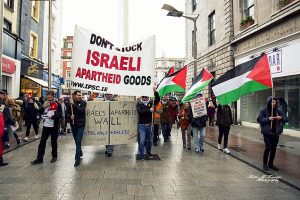
BDS is an inclusive, anti-racist human rights movement that is opposed on principle to all forms of discrimination, including anti-semitism and Islamophobia.
The BDS movement is supported by unions, churches, NGOs and movements representing millions across every continent and there are vibrant BDS campaigns in communities across the world. Progressive Jewish groups play an important role in the movement.
BDS aims to end international support for Israeli violations of international law by forcing companies, institutions and governments to change their policies. As Israeli companies and institutions become isolated, Israel will find it more difficult to oppress Palestinians. BDS campaigns also raise awareness about how Israel oppresses the Palestinian people.
During its relatively short existence, the BDS Movement has scored important and impressive victories and successes, including compelling multinational firms – including CRH, Veolia, Orange and G4S – to pull out of operations that aid Israel’s occupation and colonialism. Current global BDS targets include Puma, Axa, and Hewlett-Packard which has been dumped by several huge trade unions.
The growth and success of the BDS movement sends a clear message to Palestinians and to world governments that people around the world are increasingly unwilling to accept Israel’s oppression of Palestinians. <back to top>
I’ve heard that these kinds of boycotts are antisemitic and simply target Jewish people. Is this true?
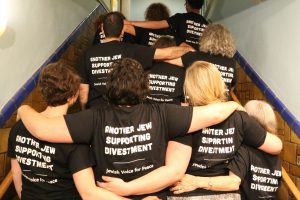
Absolutely not – just as boycotts of South Africa were not ‘anti-white’, boycotts of Israel are not ‘anti-Jewish’. Antisemitism, as defined by our colleagues in the Irish Network Against Racism is “racism or discrimination experienced by people because they are or are perceived to be Jewish or from a Jewish backgrounds.” The BDS movement seeks to pressure the Apartheid State of Israel into adhering to international law and allowing the Palestinian people to exercise their full inalienable rights – and uses the long-established nonviolent methods of boycotts, divestments and sanctions as the means to apply this pressure.
Complicity, not identity
The BDS Movement’s focus is not Jewish people, whether as a whole or individually. The BDS Movement explicitly rejects all forms of racism, bigotry and discrimination, including antisemitism and Islamophobia. Many Jewish groups and Jewish people support the BDS Movement, including Jewish-Israelis in the ‘Boycott From Within’ group, Jewish Voice for Peace in the US, and Jewish Voice for a Just Peace in Ireland, who are endorsers of the Apartheid Free Zones initiative.
The BDS Movement focuses on complicity, not identity and targets are chosen based on their relationship to the Apartheid State of Israel and its ongoing violations of human, civil and democratic rights, and its breaches of international law. From the protests of the Irish Land League – where the word boycott was originally coined – to Ghandi’s anti-British goods boycott, to the Jewish anti-Nazi boycott, to the Montgomery bus boycott, to LGBTQ+ anti-homophobia boycotts and the fossil fuel divestment movement, such tactics have repeatedly been used to attempt to end situations of injustice. Perhaps the most famous, and effective, use of a BDS campaign was the global campaign that helped to bring down the Apartheid regime in South Africa – a campaign after which the Palestinian BDS Movement models itself.
Apartheid Israel’s apologists will often say that the BDS movement ‘singles out’ Israel. In fact, the opposite is true – despite its atrocious human rights record and constant violations of international law and UN Resolutions, Western governments’ special relationship with Israel ensures that it is ‘singled out’ for protection and impunity. US aid, EU trade agreements and research grants, a thriving arms trade, and friendly diplomatic relationships are the order of the day. No Western state has moved to sanction Israel in any way for its crimes – yet the EU, US and UN have instituted both multilateral and unilateral sanctions against a wide range of countries and other entities, including Palestinian political and armed groups. There is a fundamental imbalance here that BDS, by mobilising global civil society, seeks to redress.
Of course, this does not mean that the BDS Movement opposes boycotts, etc. of other states, institutions or entities that are involved or complicit in serious human rights and international law violations. It simply means that the Palestinian BDS Movement’s goal is the liberation of the Palestinian people and its activities are focused on helping to achieve that goal. There is absolutely nothing stopping individuals, communities, spaces, entities or states engaging in other boycotts of whatever they feel merit such action.
Certainly, owing to (often deliberate) misreporting, some sincere people may be confused about the targets and tactics of the BDS Movement. Overwhelmingly, however, those who make claims about BDS being ‘antisemitic’ are doing so in an attempt to discredit the movement and isolate Israel from both political criticism and effective action to compel it to end its injustices. While not endorsing the BDS Movement, both the EU and the Irish government have stated that BDS, in the words of the Irish government, is a “legitimate political viewpoint” and they do “not agree with attempts to demonize those who advocate this policy.”
